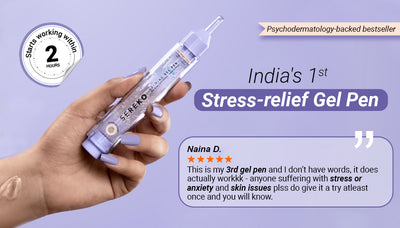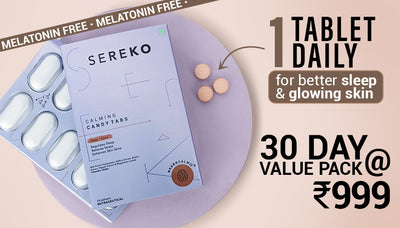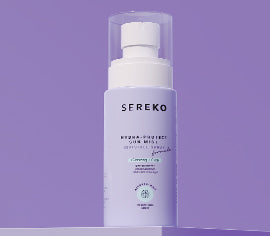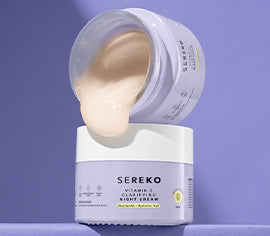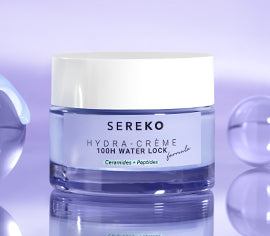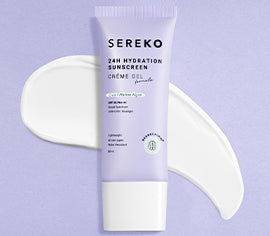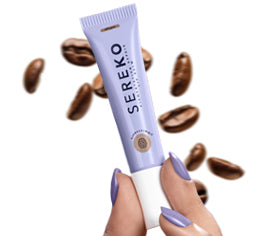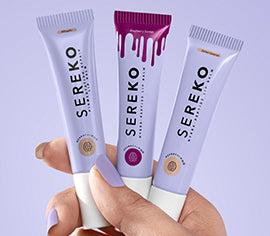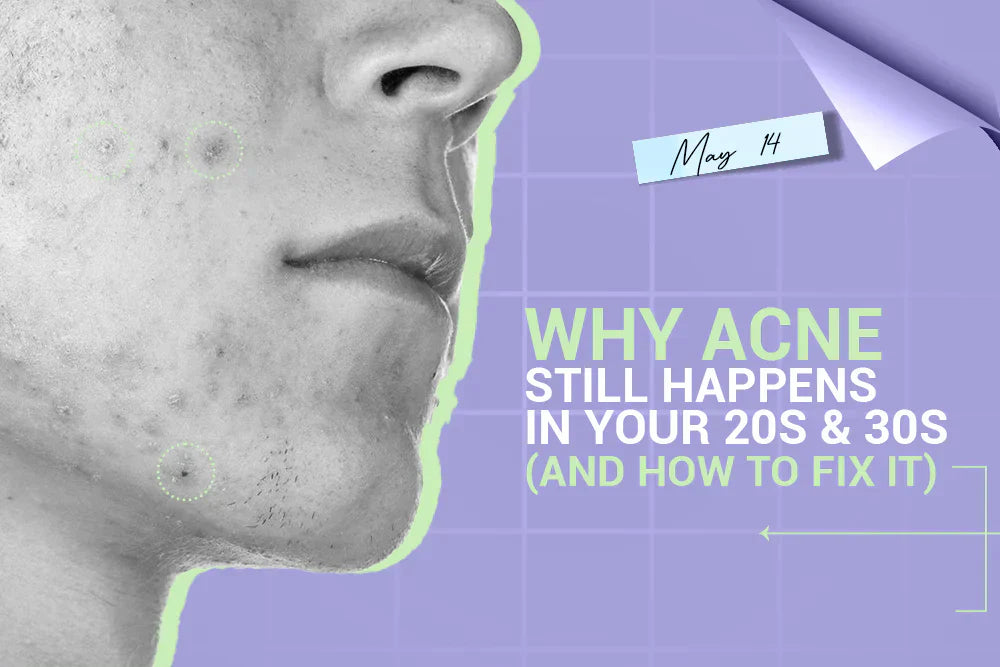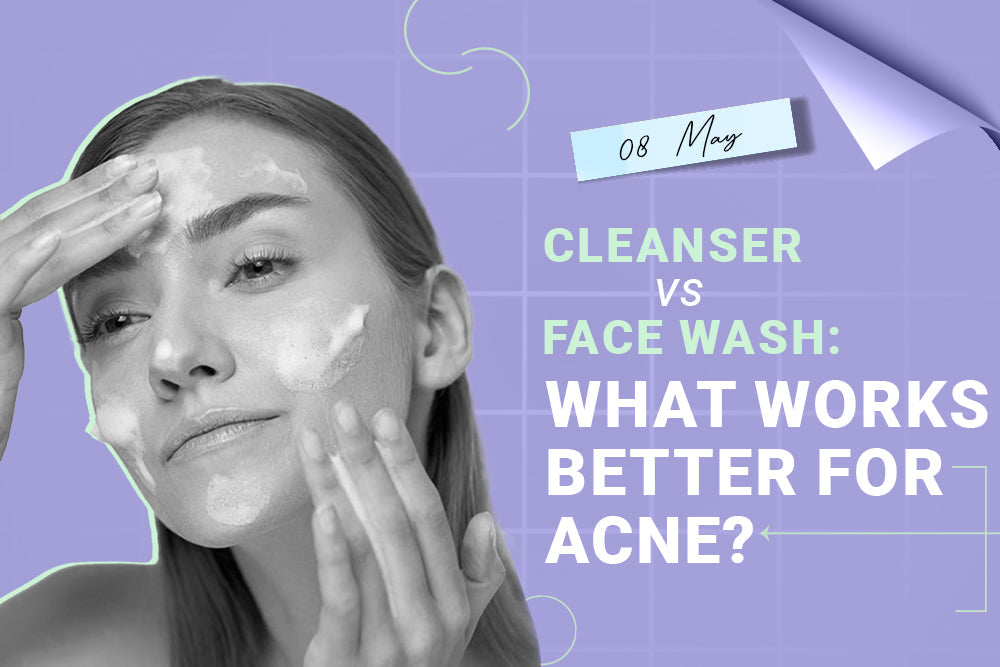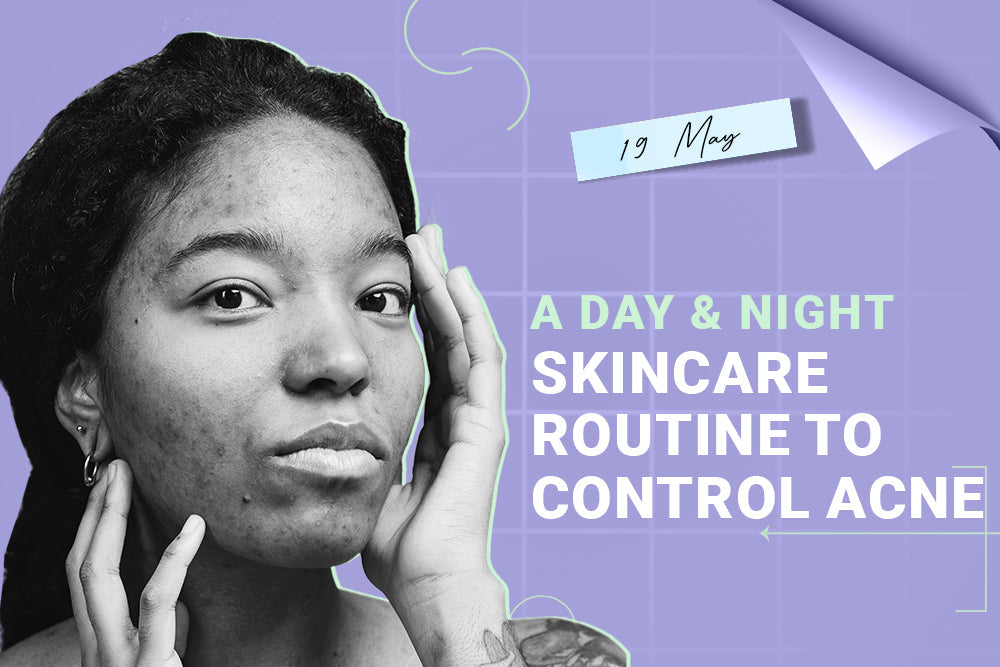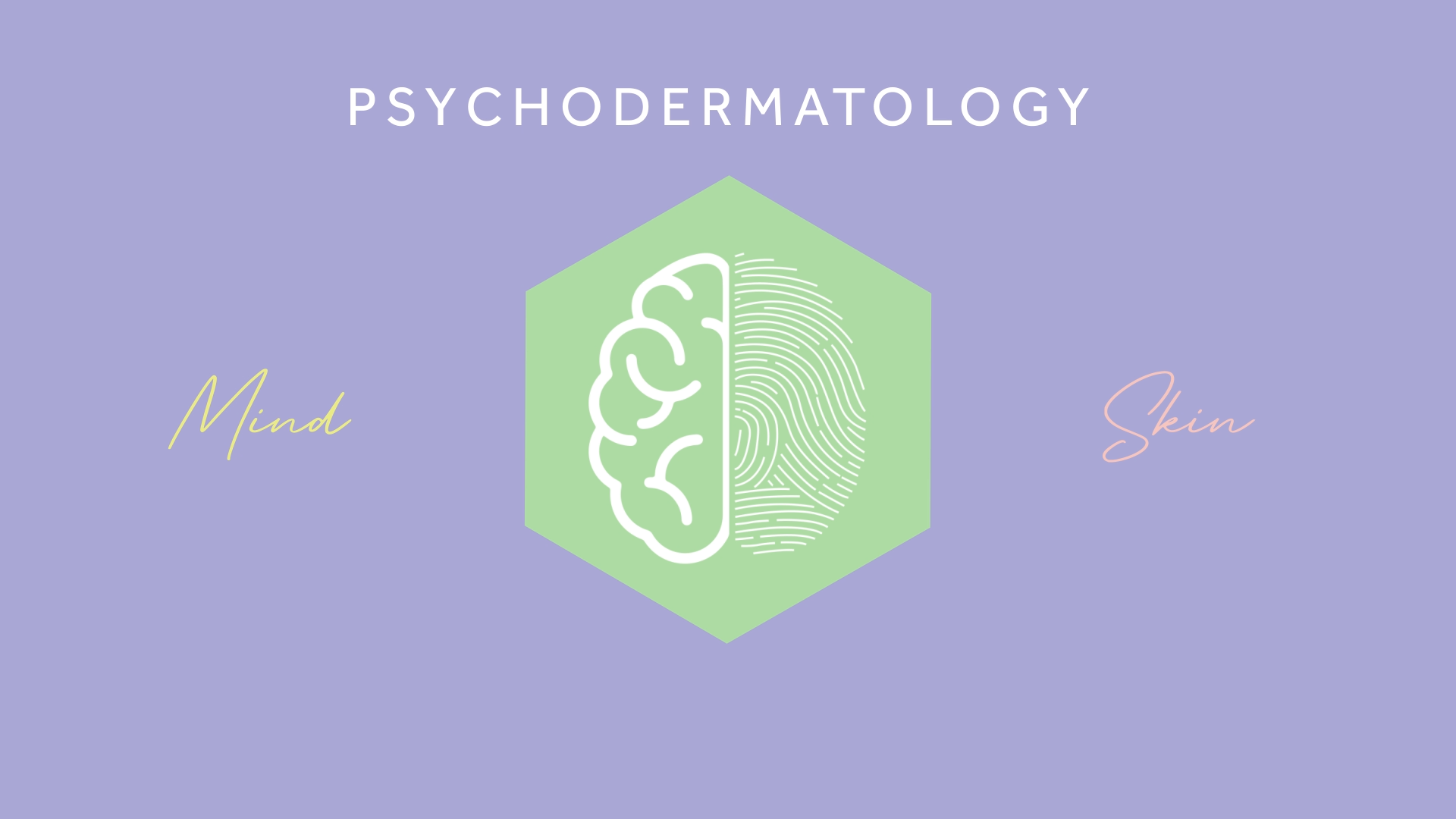Acne isn’t just a teenage problem. If you're in your 20s or 30s and still breaking out, you're not alone—and you’re not doing anything wrong. Adult acne is common, complex, and frustrating. But the good news? It’s treatable with the right understanding and approach. Let’s understand how:
What is Adult Acne?
Adult acne refers to persistent or new-onset acne that appears after the age of 20. While teenage acne is often caused by puberty-related hormonal shifts and excess oil production, adult acne tends to have more complex triggers, ranging from chronic stress to lifestyle and hormonal imbalances.
Stats: % of Adults Affected
In the 20–29 age group, 51% of women report dealing with acne, compared to 43% of men. This gap is largely due to hormonal fluctuations, caused by the menstrual cycle, pregnancy, and conditions like PCOS (Polycystic Ovary Syndrome), which can trigger oil production and inflammation in the skin.
Hormones are a significant driver of adult acne, especially for women, and often explain why acne can be more stubborn or cyclical even well past the teenage years.
Ethnicity and Acne Prevalence
Your ethnic background may also influence how likely you are to develop acne. Research has found that:
-
African American women: 37% affected
-
Hispanic women: 32% affected
-
Indian women: 30% affected
-
Caucasian women: 24% affected
- Asian women: 23% affected
Interestingly, individuals of mixed ethnicity reported the highest overall rates of both acne and rosacea, highlighting the role that genetics and skin type can play in how acne shows up.
How Is Adult Acne Different from Teenage Acne?
While acne is most commonly associated with adolescence, it's far from being just a teenage problem. In fact, acne is one of the most common chronic inflammatory skin conditions and can affect people well into their adult years.
According to the National Library of Medicine, acne that appears during the ages of 10 to 19 is categorised as adolescent acne, while acne occurring between 10 and 24 is sometimes referred to more broadly as young acne. This distinction matters because many people in their early twenties still experience breakouts that are similar in pattern to those seen during teenage years.
However, when acne develops after the age of 25, it's termed adult acne (also called post-adolescent acne, though the term 'adult acne' is more accurate and widely accepted).
Key Differences Between Teenage and Adult Acne
|
Aspect |
Teenage Acne |
Adult Acne |
|
Age Range |
10–19 years (sometimes up to 24) |
25 years and older |
|
Causes |
Hormonal changes due to puberty, excess oil production |
Hormonal fluctuations, stress, PCOS, skincare products, lifestyle |
|
Common Areas |
Forehead, nose, cheeks (T-zone) |
Jawline, chin, neck (lower face) |
|
Type of Lesions |
Often includes blackheads, whiteheads, and inflammatory pimples |
Deeper, painful cysts and persistent pimples |
|
Skin Characteristics |
Oilier skin, faster cell turnover |
Drier or combination skin, slower healing, more sensitivity |
|
Classification |
Generally short-term, related to puberty |
Persistent (since teens), Late-onset (starts after 25), or Relapsing (comes and goes over time) |
Symptoms of Adult Acne & How to Identify
Understanding the signs early can help you manage it better and choose the right treatment. Here's how to spot the symptoms and tell if what you're dealing with is truly adult acne.
1. Location: Jawline, Chin, Neck
Adult acne often appears in the lower face region. Breakouts around the jawline, chin, and neck are especially common and are usually linked to hormones.
2. Appearance: Deep Cysts vs. Surface Pimples
Unlike teen acne, adult acne can present as deep cysts that are painful and don’t come to a head, alongside occasional whiteheads or blackheads.
3. Persistent vs Occasional Acne
Adult acne can be chronic or intermittent. Some may experience ongoing flare-ups, while others deal with stress or cycle-related breakouts.
Causes of Acne in Adults
While teenage acne is typically linked to hormones, adult acne can be triggered by a variety of factors like stress, diet, medications, and even lifestyle choices. Understanding the root causes can help you tackle the problem effectively and regain control of your skin.
1. Hormonal Imbalance & PCOS
Hormones like androgens can increase oil production, leading to clogged pores. Women with PCOS (Polycystic Ovary Syndrome) often experience persistent acne, irregular periods, and hair growth.
2. Chronic Stress and Cortisol Spikes
Stress triggers the release of cortisol, which disrupts hormone balance and increases inflammation, oiliness, and sensitivity, creating the perfect storm for acne.
3. Dirty Pillowcases, Phones & Hygiene Habits
Bacteria and oil from pillowcases, phone screens, and even your hands can transfer to your face, clogging pores and triggering breakouts.
4. Poor Gut Health & Food Intolerances
An unhealthy gut can lead to systemic inflammation. Dairy, sugar, and gluten sensitivities are often linked to acne flares in adults.
5. Use of Wrong Skincare/Makeup Products
Comedogenic (pore-clogging) ingredients in skincare or makeup can worsen breakouts. Adult skin is also more sensitive and less forgiving of harsh or unsuitable formulas.
6. Menstrual Cycle & Birth Control Triggers
Hormonal fluctuations before your period or when starting/stopping birth control can lead to breakouts. It’s common to see flare-ups in the days leading up to menstruation.
Skincare Mistakes That Worsen Adult Acne
What you put on your skin matters—but how you use it matters even more. From over-cleansing to layering the wrong ingredients, many well-intentioned habits can quietly disrupt your skin barrier and fuel breakouts.
Understanding these common skincare missteps is the first step to healing adult acne at its root.
1. Over-cleansing or Using Harsh Exfoliants
Too much cleansing or exfoliation strips the skin barrier, causing increased oil production and irritation.
2. Skipping Moisturizer Due to Oily Skin
Even oily, acne-prone skin needs hydration. Skipping moisturizer can lead to dehydration, which actually signals your skin to produce more oil.
3. Layering Too Many Actives (AHAs, BHAs, Retinol)
Overloading your skin with actives can damage your barrier and worsen inflammation.
Simplicity is key.
4. Not Washing Off Sunscreen/Makeup Properly
Improper cleansing leads to buildup of residue and clogged pores. Double cleansing can help remove all traces effectively.
How to Treat Adult Acne (Complete Guide)
Adult acne is often caused by stress, hormones, lifestyle habits, and even the skincare products you trust. Harsh or pore-clogging formulas can sometimes do more harm than good, making breakouts worse.
Here’s an effective, skin-friendly approach to help you manage acne, avoid common triggers, and truly support your skin from the inside out.
1. Build a Simple Morning & Night Routine
Keep it consistent and minimal. Cleanser, treatment serum, moisturizer, and SPF (in the morning) are your essentials.
2. Choose Products with Salicylic Acid, Niacinamide, Zinc, Retinol
These ingredients reduce inflammation, unclog pores, and regulate oil. Start slow and patch test before full use.
3. Importance of Patch Testing
Always test new products on a small area first. Adult skin can be reactive, so it’s best to play safe.
4. Stick to One Routine for 3–4 Weeks
Give products time to work. Changing too often disrupts progress and can trigger new breakouts.
5. Manage Stress & Sleep Patterns
Prioritise mental well-being. Incorporate stress-reducing habits like meditation, exercise, and consistent sleep for clearer skin.
Our Anti-Acne Range – Complete Treatment in 4 Steps

At SEREKO, we created the patented Anti-Acne Biome™ range with a simple belief:
You can’t truly heal acne without addressing both external and internal triggers.
Our formulas combine clinically proven actives with microbiome-friendly, stress-targeting ingredients to bring your skin and body back into balance.
Step 1: Cleanse
Start with the Pore-Clearing Wash — a non-drying, pH-balanced cleanser with 1% Salicylic Acid and 2% Glycolic Acid to gently exfoliate, unclog pores, and remove excess oil without stripping your skin.
Step 2: Treat
Apply the Clear Corrective Serum powered by 2% Encapsulated Salicylic Acid and 3% Azelaic Acid to calm active breakouts, fade post-acne marks, and smooth out uneven texture. It's lightweight, fast-absorbing, and gentle on reactive skin.
Step 3: Moisturize
Follow with the Oil Clear Moisturizer, packed with Natural Moisturising Factors, Zinc PCA, and Lactic Acid to hydrate, reduce redness, and regulate sebum—without clogging pores.
Step 4: Detoxify
Finish with the Skin Clearing Syrup—a blend of 12+ purifying herbs like: Sea Buckthorn, Manjishtha, Shatavari, and Berberine that supports hormonal balance, detoxifies the gut and blood, and reduces stress-related inflammation that can lead to acne.
Home Remedies That Help (and What to Avoid)
We’ve all had those desperate skin moments—googling hacks at midnight or dabbing random things from the kitchen onto breakouts.
But when it comes to acne, not every home remedy is a good idea. Some can soothe your skin, while others may leave it more irritated, inflamed, or even scarred.
Here’s how to tell what’s safe—and what’s not:
1. What Can Help:
-
Ice cubes for inflamed breakouts
Great for calming swelling and redness. Wrap in a clean cloth and apply for 1–2 minutes at a time.
-
Diluted tea tree oil
A natural antibacterial that may help shrink pimples—just always mix it with a carrier oil (like jojoba or almond oil) to avoid burns or irritation.
-
Green tea compress
Rich in antioxidants and gentle on skin, cooled green tea bags can help soothe inflamed or irritated areas.
-
Honey (raw or manuka)
Naturally antibacterial and anti-inflammatory. A tiny dab on a clean pimple might help calm it overnight.
-
Aloe vera gel (pure)
Soothes redness and supports skin healing—just make sure it's pure aloe without added fragrance or alcohol.
2. What to Avoid:
-
Toothpaste
It’s too harsh for your skin and can cause burns, dryness, and irritation.
-
Lemon or lime juice
Highly acidic and phototoxic—can lead to burns or dark spots, especially in sunlight.
-
Baking soda
Disrupts your skin's natural pH and weakens the barrier, leading to more sensitivity and breakouts.
-
Rubbing alcohol or undiluted essential oils
They may feel like they’re “drying out” pimples, but they can also strip the skin and trigger more oil production.
-
Scrubbing with salt or sugar
Physical exfoliants like these are too abrasive for acne-prone skin and can cause microtears or worsen inflammation.
Quick Reminders:
-
Always patch-test first — even natural or gentle ingredients can cause irritation.
-
Be consistent — acne takes time to heal, and your skin needs steady, patient care.
-
Protect your skin barrier — hydration and barrier repair are just as crucial as targeting breakouts.
-
When in doubt, choose science-backed ingredients — salicylic acid, niacinamide, and azelaic acid are proven, reliable options.
When to Visit a Dermatologist?
1. If Cystic Acne, Painful Pimples, or Scarring
See a dermatologist if over-the-counter solutions aren’t helping or if your acne is painful and persistent.
2. Prescription Treatments: Retinoids, Antibiotics, Spironolactone
Stronger treatments may be necessary for hormonal or cystic acne.
3. Hormonal Testing for Irregular Cycles
If acne is paired with irregular periods, excess hair growth, or other signs of imbalance, a hormonal checkup may be helpful.
CONCLUSION
Adult acne can be incredibly frustrating, but it’s not something you have to live with forever. With the right knowledge, supportive habits, and products that truly work with your skin, you can take control. Pay attention to what your skin is telling you. Nourish it—inside and out. Because clear skin isn’t just about how you look—it’s about how you feel.
Dealing with stress-induced breakouts? Shop the Anti-Acne Biome™ range now and give your skin the support it deserves.
